RF Component Sourcing
South-Electronic
South-Electronic's RF Components Sourcing services are meticulously designed to provide unmatched efficiency and precision, catering to a wide array of RF applications. Located in Shenzhen, we leverage our strategic position to offer fast turnarounds and comprehensive global support.
Your Premier Source for RF Component
Welcome to South-Electronic, your definitive resource for top-tier RF components sourcing.
Our expertly curated services guarantee unmatched precision and dependability across industries such as telecommunications, aerospace, and industrial applications. With robust quality assurance, extended warranties, and lifetime after-sales service, we ensure that your operations never miss a beat. Choose superior RF components from South-Electronic for innovative solutions that propel your success.
Get a quote now and take your projects to new heights!
Why Choose South-Electronic?
-
Custom Solutions
Tailor-Made for your project.
Work closely with South-Electronic to customize your RF Component to ensure it precisely meets your specific requirements. Whether it's a specialized component or a complex design, you can rely on us to provide the products you need. -
Premium Quality
You deserve the best, and quality is our top priority.
With our rigorous quality control processes, including thorough inspections and testing, we guarantee that your products will meet the highest standards. Our RF Component are defect-free, so you can count on them to perform reliably in your production. -
Clear Communication
Provide you with responsive, clear and efficient service.
That’s why we provide clear, responsive support throughout the entire process. Whether you have a question or need an update, we’re here to keep you informed and make sure your project stays on track. -
Competitive Pricing
You want the best quality at the best price.
That’s why we offer top-quality RF Component at competitive prices. You can maximize your profit margins without sacrificing the high standards you require. We offer cost-effective solutions without cutting corners on quality, so you can stay ahead of the competition. -
Fast Global Shipping
You need a partner who can keep up with your fast-paced business.
We offer global shipping with fast turnaround times, so your RF Component arrive when you need them. With our reliable logistics, you don’t have to worry about delays. You can stay on schedule and keep your production running smoothly.
Related Project We had Done
Customer Reviews
Common Questions
Most Popular Questions
Send us a message
The more detailed you fill out, the faster we can move to the next step.
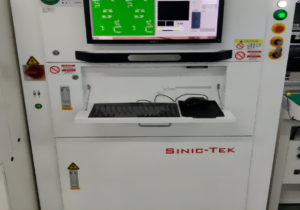
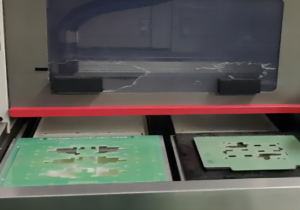
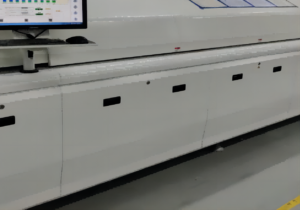
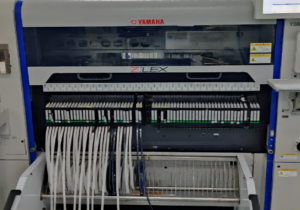
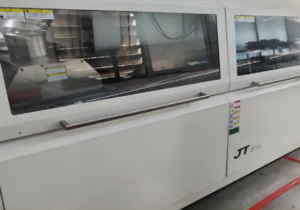
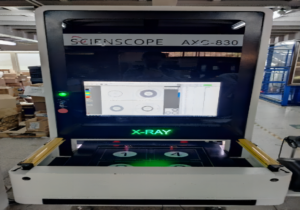

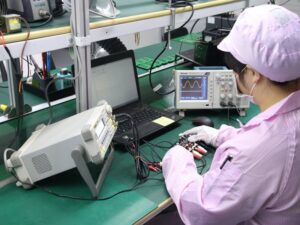

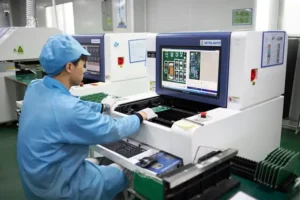



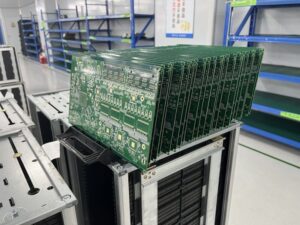

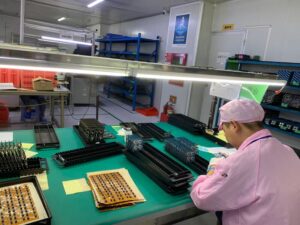



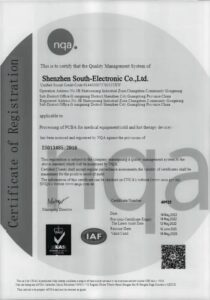
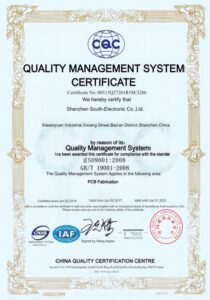





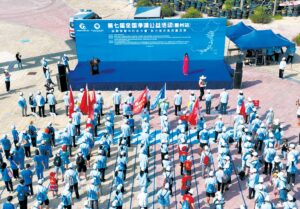
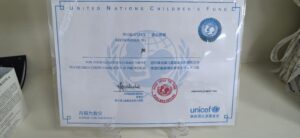
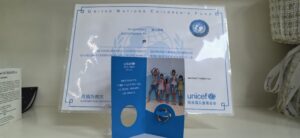

The Complete Guide for RF Components Sourcing
Contents
Chapter 1
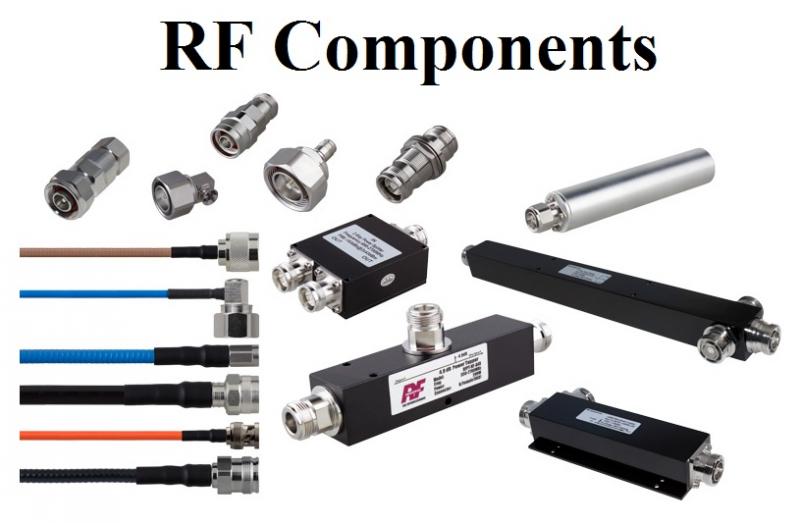
Understanding RF components
What are RF Components?
RF components, or Radio Frequency components, are essential parts used in the transmission and reception of radio signals. These components function within the radio frequency range of about 3 kHz to 300 GHz, which includes signals used in broadcasting, communication technologies, and radar systems. Common RF components include:
- Amplifiers: Boost the strength of weak radio signals.
- Antennas: Transmit and receive radio waves through the air.
- Oscillators: Generate AC signals within a specific frequency range.
- Mixers: Combine two frequencies to produce new frequencies.
- Filters: Allow certain frequencies to pass while blocking others.
- Switches: Control the path that a signal will follow in a circuit.
- Transmission Lines: Carry RF signals from one place to another with minimal loss.
Why are RF Components Important?
RF components are critical to the functionality and efficiency of many modern technologies. Here are a few reasons why they are crucial:
- Communication Systems: RF components are at the heart of all wireless communication, including mobile phones, Wi-Fi, and satellite communications. They enable the transmission of data over long distances without physical connections.
- Broadcasting: They are used in FM/AM radios and television transmissions to deliver audio and video content to a wide audience.
- Radar and Navigation: RF components play key roles in radar systems used for air traffic control, weather monitoring, and military applications. They also enable GPS systems that provide global navigation support.
- Medical Applications: They are used in medical equipment such as MRI machines and wireless medical devices.
- Industrial Systems: RF components are used in industrial applications for process monitoring and control, including remote operations and automation.
- IoT Devices: The Internet of Things (IoT) relies heavily on RF components to connect a myriad of devices and sensors, facilitating smart environments.
In summary, RF components are vital for the seamless operation of many technologies we rely on every day. Their ability to handle data transmission efficiently and their role in supporting wireless connectivity make them indispensable in modern society.
Chapter 2
Benefits of Quality RF Components
Investing in high-quality RF components has numerous advantages that significantly impact performance, reliability, and overall project success. Here are some of the key benefits:
- Enhanced Performance:Quality RF components are designed to operate efficiently within specified frequency ranges, resulting in improved signal clarity and reduced distortion. This leads to better overall performance of communication systems, ensuring that signals are transmitted and received without loss or interference.
- Increased Reliability:High-quality RF components undergo rigorous testing and quality assurance processes before being deployed, ensuring consistent performance over time. Reliable components reduce the risk of system failures, allowing for uninterrupted operations in critical applications such as telecommunications and medical devices.
- Longer Lifespan:Investing in quality components typically translates to a longer operational lifespan. Quality materials and construction methods enhance durability, allowing components to withstand harsh environments and extended usage without degrading performance.
- Reduced Maintenance Costs:Quality RF components often require less frequent maintenance and replacement. This leads to lower operational costs over time as maintenance efforts, downtime, and replacement expenses are minimized.
- Better Signal Integrity:Superior RF components are engineered to provide excellent signal integrity, eliminating issues such as cross-talk, noise, and interference. This ensures that data transmissions remain clear and accurate, which is particularly important in applications requiring high precision.
- Compliance with Standards:Quality RF components are often designed to meet or exceed industry standards and regulations. This compliance ensures that systems using these components will function correctly and reliably in their intended environments, avoiding regulatory issues and enhancing credibility.
- Enhanced Scalability:With quality RF components, systems can be designed to be scalable, accommodating future growth or changes in operational needs. Quality components often support upgrades and integration with newer technologies, ensuring a future-proof investment.
- Improved Energy Efficiency:High-quality RF components typically exhibit better energy efficiency, reducing power consumption in communication systems. This not only lowers operational costs but also aligns with sustainability goals by minimizing the carbon footprint of electronic systems.
- Access to Technical Support:When you choose reputable manufacturers providing quality RF components, you often gain access to expert technical support. This can be invaluable during the design and implementation phases, helping to troubleshoot issues or optimize performance.
- Increased Market Competitiveness: By utilizing quality RF components, businesses can deliver more reliable and high-performing products to their customers. This can lead to enhanced customer satisfaction, greater market share, and improved brand reputation.
In summary, the benefits of quality RF components extend far beyond immediate performance improvements. They contribute to long-term reliability, cost savings, and the overall effectiveness of communication and technological systems, making them a crucial investment for any organization relying on RF technology.
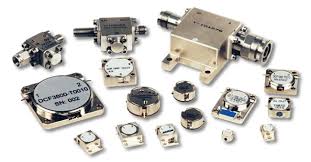
Chapter 3
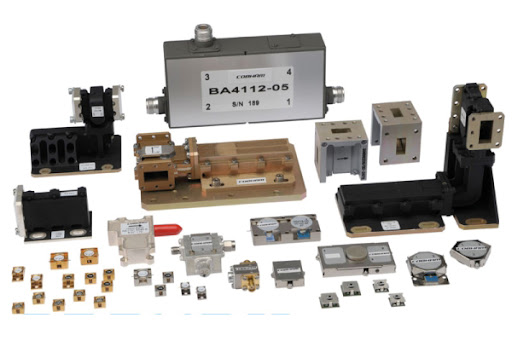
Identifying Your RF Component Needs
When you’re developing a project that involves radio frequency (RF) technology, the first thing you need to do is figure out what RF components you need. There are several things you need to consider to make sure you select the right components for your specific application. Here’s how to do it:
- Define the Application:First, you need to clearly define what you’re trying to do. Are you designing a communication system, a radar application, or a wireless sensor network? Knowing what you’re doing will help you figure out what kind of RF components you need.
- Determine Frequency Requirements:Next, you need to know what frequency range your application will operate in. Different RF components are optimized for different frequency bands, so you need to know what frequencies you’re working with to select compatible components.
- Assess Performance Specifications:You also need to know what performance characteristics you need, such as gain, bandwidth, power output, sensitivity, and noise figure. You need to know how these specifications fit with the overall goals of your system to make sure it works the way you want it to.
- Consider Environmental Conditions:You also need to know what kind of environment your RF components will be used in. Things like temperature, humidity, vibration, and exposure to electromagnetic interference can all affect what kind of components you need. You might need high-quality components that can handle harsh conditions.
- Evaluate Size and Layout Constraints:You also need to know how big your design is going to be and how it’s going to be laid out. RF components come in all different shapes and sizes, so you need to make sure the components you choose will fit in the space you have and work well in your circuit design.
- Plan for Scalability:You also need to think about how your project might grow in the future. You want to choose RF components that will let you scale up and change your design easily if you need to.
- Budget Considerations:You also need to think about how much money you have to spend on RF components. High-quality components might cost more, but you need to balance the cost with the long-term benefits of reliability and performance so you don’t end up spending more money on components that don’t work well.
- Research and Compare Suppliers:You also need to do your homework to find suppliers that have the RF components you need. You need to compare their products, quality assurance processes, customer support, and warranties to make sure you’re working with a good company.
- Seek Expert Advice:Finally, if you’re not sure what to do, don’t be afraid to ask for help. Talk to people who know what they’re doing or contact the technical support people at the companies that make the components you’re interested in. They can help you figure out what you need and what the best solution is.
By following these steps to figure out what RF components you need, you’ll be able to make good decisions that will help your project work better and be more successful. You’ll end up with a design that’s optimized to meet your needs now and in the future.
Chapter 4
Finding Reliable Suppliers
Finding reliable suppliers for RF components is essential to the success of your project. The quality of components can significantly affect the performance, reliability, and overall effectiveness of your application. Here are some strategic steps to help you identify and select dependable suppliers:
Conduct Thorough Research:Start by researching potential suppliers online. Look for manufacturers and distributors that specialize in RF components. Review their websites for product catalogs, technical specifications, and information about their experience in the industry.
Evaluate Industry Reputation:Investigate the reputation of potential suppliers by reading customer reviews, testimonials, and case studies. Industry forums and online platforms can provide valuable insights into the experiences of other customers, helping you gauge the suppliers’ reliability and product quality.
Check Certifications and Compliance:Ensure that the suppliers comply with relevant industry standards and certifications (such as ISO, RoHS, or FCC). Compliance indicates adherence to quality control processes and regulatory requirements, further assuring the reliability of the components.
Assess Product Quality:Evaluate the quality of the RF components offered by suppliers. Request samples or datasheets, and consider conducting tests to verify performance and reliability in your specific application environment.
Look for Innovation and R&D Capabilities:A supplier with a strong focus on research and development is likely to provide innovative and cutting-edge products. Explore their recent advancements and product offerings to ensure they are up-to-date with the latest technology trends.
Evaluate Technical Support and Customer Service:Reliable suppliers should offer exceptional technical support to assist with product selection, integration, and troubleshooting. Assess their responsiveness to inquiries and the availability of customer service resources.
Consider Supply Chain Stability:Investigate the supplier’s supply chain operations to understand their ability to deliver components consistently and on time. A stable supply chain with good inventory management reduces the risk of delays in your project timeline.
Discuss Warranty and Return Policies:Review the warranty and return policies offered by the suppliers. A solid warranty demonstrates the supplier’s confidence in their products, and generous return policies can provide peace of mind in case the components do not meet your expectations.
Establish Relationships:Building a strong relationship with reliable suppliers can lead to better collaboration and support. Engage in open communication to understand their capabilities and express your project needs clearly.
Seek Recommendations:Reach out to industry peers, trade associations, or professional networks for recommendations on reputable suppliers. Personal referrals can often lead to discovering hidden gems in the supplier landscape.
By following these steps to find reliable suppliers, you can enhance your procurement process and ensure that you receive high-quality RF components that meet your project requirements. Establishing partnerships with dependable suppliers is crucial for achieving successful outcomes and building long-lasting business relationships.
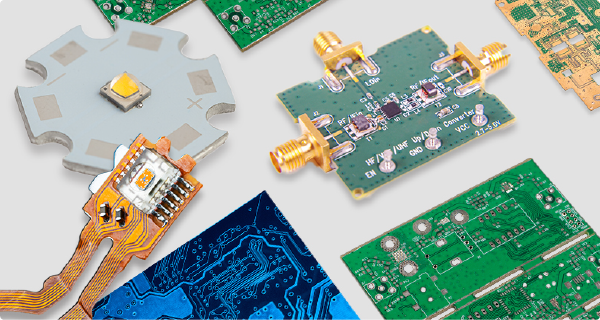
Chapter 5

Customizing RF Components
Customizing RF components can be crucial for meeting specific application requirements, enhancing performance, and ensuring compatibility within unique systems. Tailored components allow designers and engineers to optimize their designs for functionality, efficiency, and reliability. Here are key factors to consider when customizing RF components:
Assess Application Requirements:Begin by clearly defining the specific needs of your application. Understand the operational frequency, bandwidth, power levels, and environmental conditions that the RF components must perform under. This foundational understanding will guide the customization process.
Collaborate with Suppliers:Work closely with suppliers who specialize in RF components. A good supplier will often have design engineers who can help customize components based on your specific requirements. Open communication and collaboration are essential to ensure that the final product aligns with your expectations.
Specify Performance Parameters:Clearly outline the performance parameters you wish to achieve. This might include gain, noise figure, input/output impedance, and efficiency. By specifying these parameters, you can guide the design process to develop components that meet or exceed performance expectations.
Consider Mechanical Design:Custom RF components may require unique mechanical designs to fit your application’s form factor. Discuss size, shape, mounting options, and environmental seals needed to protect the components from dust, moisture, or extreme temperatures.
Evaluate Integration Needs:Think about how the customized RF components will integrate with other systems and components in your project. Ensure that custom designs are compatible with existing technologies, including power sources, circuit boards, and connectors.
Prototype Development:Work with suppliers to produce prototypes of the customized RF components. Testing prototypes will allow you to assess their performance in real-world conditions, identify potential issues, and make necessary adjustments before mass production.
Iterate and Optimize:The customization process may involve several iterations before achieving the desired outcomes. Utilize feedback from prototype testing to refine the design. Continuous optimization is vital for ensuring that the RF components perform reliably in their intended applications.
Cost Considerations:While customization can enhance performance and fit, it is essential to consider the cost implications. Balance the benefits of customization with your budget constraints to ensure that the final product is both effective and economically viable.
Documentation and Compliance:Ensure that all customized RF components come with proper documentation, including datasheets and compliance certifications. This information is critical for verifying that the components meet regulatory standards and can help during the approval processes for your final product.
Long-Term Support and Maintenance:Consider the long-term support for the customized RF components. Establish service agreements with suppliers for maintenance, upgrades, and replacements as needed. Long-term reliability and accessibility to parts are essential for the ongoing success of your application.
Customizing RF components allows for the creation of solutions tailored to specific needs, enhancing overall system viability and performance. By following these considerations, you can effectively customize RF components to meet the demands of your unique applications, ultimately leading to more successful outcomes in your projects.
Chapter 6
Ensuring Quality and Reliability
Ensuring quality and reliability in RF components is paramount for the successful implementation of any radio frequency application. High-quality components not only enhance performance but also reduce the risk of failures, ensuring that systems operate without interruption over time. Here are essential strategies and practices to guarantee the quality and reliability of RF components:
- Select Reputable Manufacturers:Begin by choosing manufacturers with a strong reputation for producing high-quality RF components. Research their track record in the industry, customer reviews, and their history of product performance. Well-established manufacturers are more likely to adhere to strict quality control processes.
- Implement Rigorous Testing Protocols:Conduct thorough testing of RF components before they are integrated into your systems. Utilize a variety of testing methods, including electrical testing, thermal testing, and environmental testing, to evaluate performance under different conditions. Ensure that tests cover all relevant specifications, such as gain, bandwidth, power handling, and noise figure.
- Request Compliance Certifications:Verify that the RF components comply with industry standards and certifications, such as ISO9001, RoHS, and applicable FCC regulations. Compliance indicates that manufacturers have followed best practices in production and adhere to quality management systems, which contribute to the reliability of the components.
- Perform Regular Quality Audits:Conduct regular audits of your suppliers to assess their quality assurance processes. This includes reviewing their manufacturing practices, quality control checks, and overall commitment to maintaining high standards. Establish a routine follow-up to ensure ongoing compliance with quality requirements.
- Utilize Advanced Design Techniques:Invest in advanced design techniques such as simulation and modeling to predict and optimize the performance of RF components before production. Using simulation software can help identify potential issues early in the design phase, allowing for modifications that enhance reliability.
- Establish Clear Specifications:Create detailed specifications for RF components as part of the design requirements. Clear and precise documentation will ensure that manufacturers understand the performance characteristics, dimensions, and environmental conditions your components must meet. This clarity minimizes misunderstandings during production.
- Monitor Performance Post-Deployment:After deploying RF components in your system, continue to monitor their performance over time. Use diagnostic tools and data analysis to track metrics such as signal strength, distortion, and failure rates. This monitoring approach can help you identify potential reliability issues before they escalate.
By implementing these strategies, organizations can ensure that their RF components are of the highest quality and reliability. This focus on quality not only protects investments in RF technology but also enhances the overall performance and success of related applications, leading to greater user satisfaction and operational efficiency.

Chapter 7
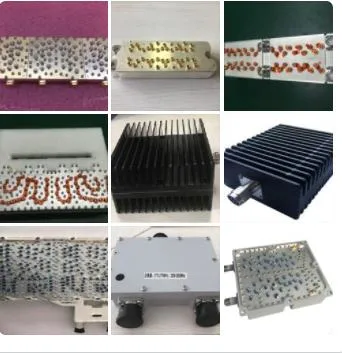
Navigating the Sourcing Process
Navigating the sourcing process for RF components is a critical step in ensuring that you acquire the right components to meet your project requirements. A well-structured approach can streamline the procurement process, reduce costs, and mitigate risks associated with supply chain issues. Here are key steps and strategies to effectively navigate the sourcing process:
Define Your Requirements:
- Begin by clearly defining your RF component requirements based on your project’s specifications. Identify key parameters such as frequency range, power output, gain, size, and environmental conditions. A detailed requirements document will serve as a foundation for your sourcing efforts.
Conduct Market Research:
- Research the market to identify potential suppliers and manufacturers of RF components. Explore various resources, including industry forums, trade shows, and online platforms, to gather information about vendors and their product offerings. Assess their reputation, capabilities, and previous project experiences.
Create a Supplier List:
- Compile a list of potential suppliers that meet your criteria based on your research. Consider factors such as location, manufacturing capacity, product range, and experience in the RF component industry. This list will guide your outreach efforts during the sourcing process.
Request Proposals and Quotes:
- Reach out to selected suppliers to request proposals and quotes for the RF components you need. Provide them with your detailed requirements to ensure that the proposals are accurate and address your specific needs. Compare proposals based on pricing, lead times, and terms of service.
Evaluate Suppliers:
- Once you receive proposals, evaluate the suppliers based on several criteria, including quality assurance processes, delivery timelines, customer service, and overall responsiveness. Consider conducting supplier audits or site visits to gain a deeper understanding of their operations and capabilities.
Negotiate Terms:
- Engage in negotiations with the preferred suppliers to secure favorable terms. Discuss pricing, payment terms, minimum order quantities, and warranty conditions. Effective negotiation can lead to cost savings and better contractual agreements that protect your interests.
Prototype and Test Samples:
- Before committing to a large order, request prototypes or samples of the RF components from the selected suppliers. Conduct thorough testing to evaluate performance, compatibility, and reliability. Testing will help you ensure that the components meet your expectations before full-scale production.
Establish Contracts and Agreements:
- Once you’ve selected a supplier based on your evaluations and testing, formalize the relationship with a written contract. Clearly outline terms regarding delivery schedules, pricing, quality expectations, and penalties for non-compliance. This ensures mutual understanding and accountability.
Monitor Supplier Performance:
- After placing your order, continue to monitor the supplier’s performance throughout the production and delivery phases. Maintain open lines of communication to address any issues that arise promptly. Regularly assess delivery timelines, quality of components, and responsiveness to inquiries.
Build Long-Term Relationships:
- Focus on nurturing long-term relationships with your suppliers. A collaborative approach can lead to improved collaboration on future projects, priority support during emergencies, and potential discounts on future orders. Investing in supplier relationships can yield lasting benefits for both parties.
Stay Informed About Industry Trends:
- Keep abreast of industry trends and technological advancements in RF components. Understanding market dynamics will help you adapt your sourcing strategies and identify opportunities for cost savings or improved quality in your procurement processes.
Plan for Future Needs:
- Finally, consider your future sourcing needs and plan accordingly. Engage suppliers in discussions about your projected demand, and explore opportunities for bulk purchasing or consignment arrangements to ensure that you can meet increasing requirements as your projects evolve.
By following these steps, you can effectively navigate the sourcing process for RF components, ensuring that you select reliable suppliers, acquire high-quality products, and maintain a robust supply chain for your projects. A strategic approach to sourcing not only supports immediate project goals but also lays the groundwork for future success in RF technology applications.
Chapter 8
Managing Supply Chain Challenges
Assess and Diversify Risks: Identify potential risks in your supply chain and diversify your supplier base to reduce dependency on a single source, ensuring flexibility in case of disruptions.
Build Strong Supplier Relationships: Foster open communication and collaboration with suppliers to enhance trust and prioritize service during challenging times.
Leverage Technology: Use supply chain management software for real-time visibility into inventory and supplier performance, enabling quick responses to issues.
Develop Contingency Plans: Create clear contingency plans to address potential disruptions, including alternative sourcing and communication strategies.
Improve Forecasting: Enhance demand forecasting using data analysis to better anticipate changes and reduce the risk of supply shortages due to unexpected demand.
Encourage Agility: Embrace agile practices that allow for quick adjustments in sourcing and inventory management to effectively respond to changing circumstances.

Chapter 9

Cost Considerations and Budgeting
When you’re sourcing RF components, cost considerations and budgeting are key to the success and sustainability of your project. Managing costs while maintaining quality requires a strategic approach. Here are some things to think about:
- Set a Clear Budget:Create a budget that covers all potential expenses related to RF components, including procurement, testing, shipping, and potential tariffs. A clear budget gives you a financial framework to guide your decisions.
- Consider Total Cost of Ownership (TCO):Look at the total cost of ownership, not just the initial purchase price. TCO includes not only the cost to buy something, but also things like maintenance, operational expenses, and potential future upgrades. Considering TCO helps you make informed decisions about long-term investments.
- Do a Cost-Benefit Analysis:Compare different suppliers and component options by doing a cost-benefit analysis. Look at the trade-offs between costs and benefits, such as performance, quality, and reliability. This analysis will help you identify the most cost-effective solutions that meet your needs.
- Negotiate Pricing:Negotiate with suppliers to get the best pricing and terms. Use your potential for repeat business or bulk purchasing to negotiate discounts. Good negotiation can save you a lot of money and get you better contract terms.
- Keep an Eye on Market Trends:Stay informed about market trends and fluctuations in component prices. Understanding the supply and demand dynamics can help you figure out the best times to buy and take advantage of lower prices.
- Plan for the Unexpected:Include contingency funds in your budget to cover unexpected costs or price increases. Allocating a percentage of your budget for unforeseen expenses helps you manage financial risks and gives you flexibility when dealing with supply chain challenges.
By focusing on these cost considerations and using strategic budgeting practices, you can manage the expenses associated with sourcing RF components while still getting quality and reliability. This approach will help you successfully execute and sustain your RF projects.
Chapter 10
Future Trends in RF Components
The RF components field is changing fast, driven by technology advances and increasing demand across industries. Here are some future trends to watch for in RF components:
1. 5G Technology Integration
As 5G networks expand, there will be a growing need for high-frequency RF components that support faster data rates and increased capacity. Components that enable efficient communication in dense networks will become essential.
2. Miniaturization and Performance Enhancement
The trend toward smaller, lightweight RF components will continue, driven by the demand for compact electronic devices. Innovations in materials and design will enhance performance while reducing size, making components more versatile for various applications.
3. Advanced Materials Development
The use of advanced materials such as gallium nitride (GaN) and silicon carbide (SiC) is expected to rise. These materials offer higher efficiency and better thermal performance, enabling more effective RF component designs for power amplification and efficiency.
4. Increased Focus on Sustainability
Environmental concerns will lead to a greater emphasis on sustainable manufacturing practices and materials in RF component production. Companies will seek to reduce waste and energy consumption throughout the supply chain.
5. IoT and Wearable Technologies
The proliferation of Internet of Things (IoT) devices and wearables will drive demand for RF components that facilitate connectivity and data transmission in a wide range of applications. This trend will require components that are energy-efficient and capable of operating in diverse environments.
6. Enhanced Security Features
As wireless communication grows, there will be an increased focus on incorporating advanced security features in RF components to protect against potential threats and vulnerabilities. Innovations in encryption and secure communication protocols will be critical.
By staying on top of these trends, RF component manufacturers and suppliers can better position themselves to meet the changing demands of the market and take advantage of growth opportunities in the years ahead. Adaptability and innovation will be key drivers of success in this dynamic field.

Get in touch
Where Are We?
Industrial Park, No. 438 Donghuan Road, No. 438, Shajing Donghuan Road, Bao'an District, Shenzhen, Guangdong, China
Floor 4, Zhihui Creative Building, No.2005 Xihuan Road, Shajing, Baoan District, Shenzhen, China
ROOM A1-13,FLOOR 3,YEE LIM INDUSTRIAL CENTRE 2-28 KWAI LOK STREET, KWAI CHUNG HK
service@southelectronicpcb.com
Phone : +86 400 878 3488
Send us a message
The more detailed you fill out, the faster we can move to the next step.



